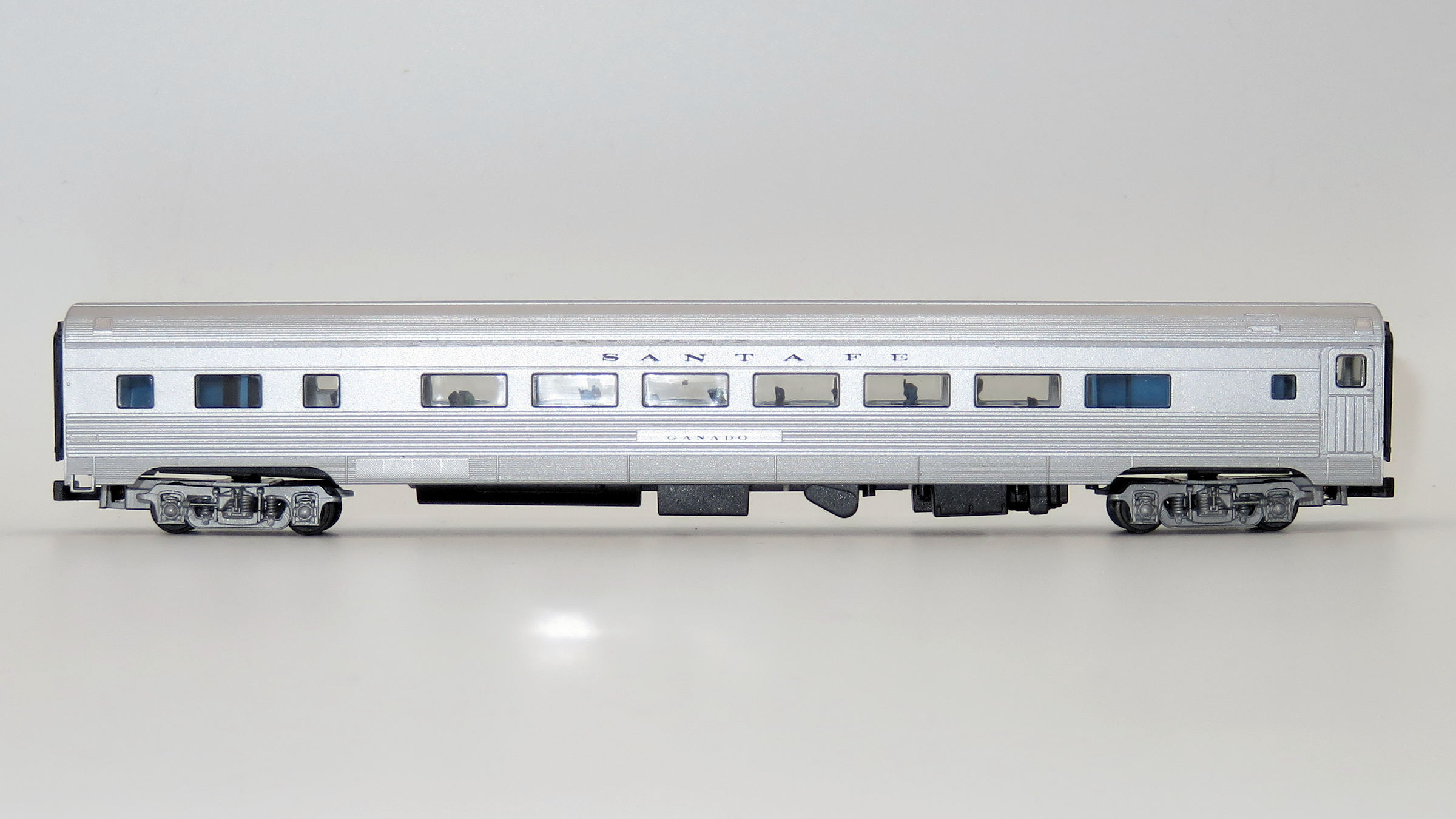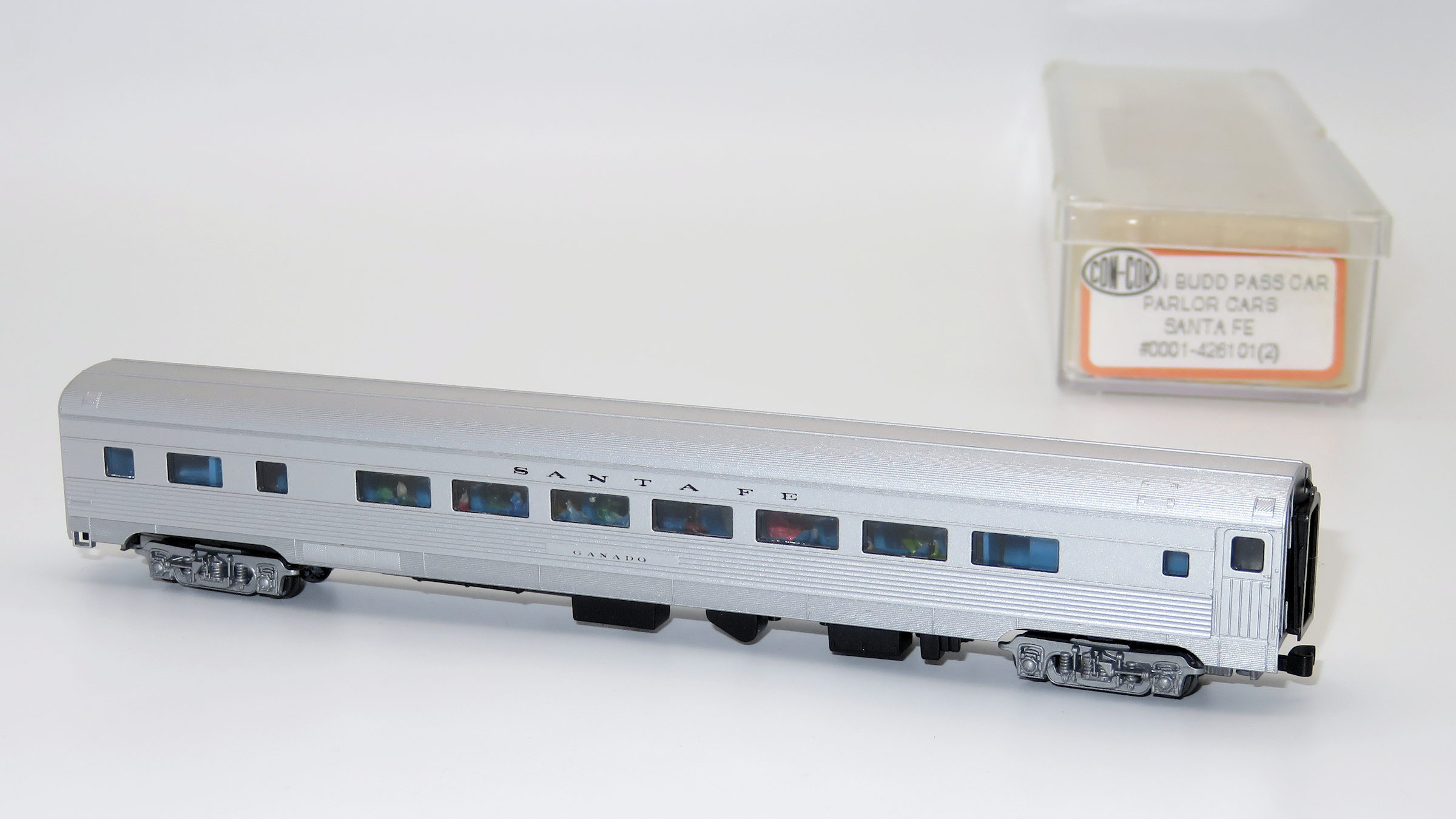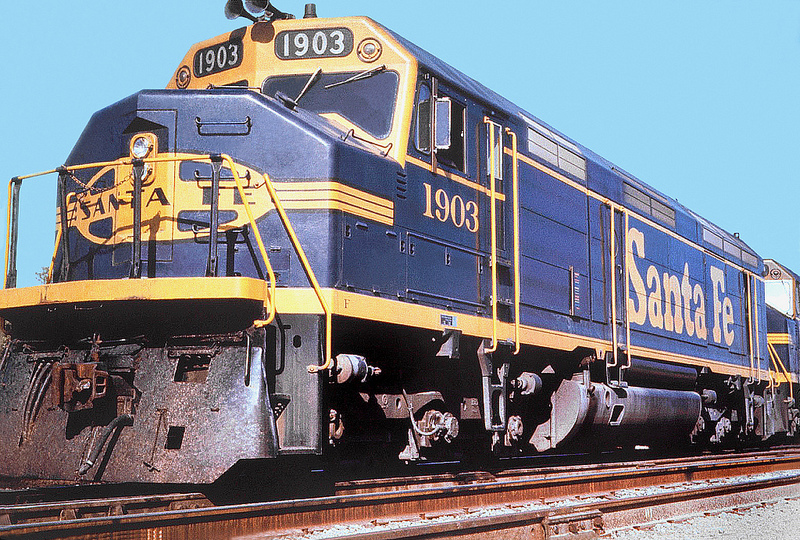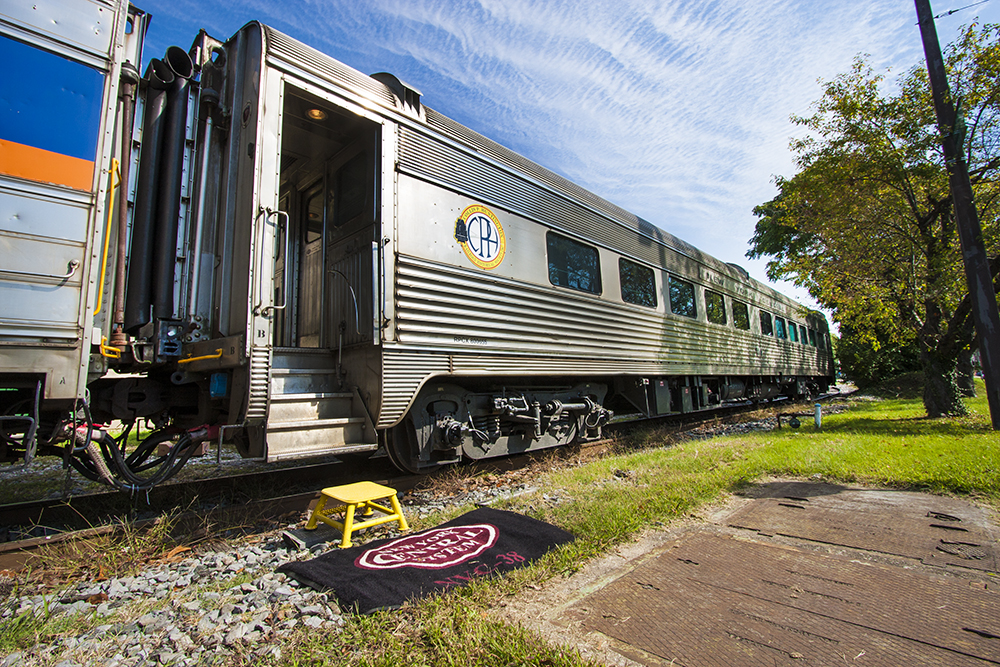Prototype History: Budd was one of the leading producers of lightweight streamlined passenger cars during the postwar period. The corrugated design permitted extra strength to the car sides. Budd built many different designs such as sleepers, coaches, dome cars and diners. The cars were built from stainless steel.
A parlor car (or parlour car outside the United States of America) is a type of passenger coach that provides superior comforts and amenities when compared to a standard coach. Parlor cars came about on United States railroads to address the absence of separate class accommodations. In the United Kingdom and Europe, passenger trains carried first-, second- and third-class coaches, with the first-class coaches offering the best seating and costing the most money. In contrast, American trains offered a flat rate and standard accommodations. For nineteenth century writers this represented a difference between class-bound Europe and the democratic United States. Most parlor cars were found on daytime trains in the Northeast United States. In comparison to a standard coach, a parlor car offered more comfortable seating and surroundings, as well as food and beverages, but it was far inferior to a sleeping car for an overnight trip.
A parlor car (or parlour car outside the United States of America) is a type of passenger coach that provides superior comforts and amenities when compared to a standard coach. Parlor cars came about on United States railroads to address the absence of separate class accommodations. In the United Kingdom and Europe, passenger trains carried first-, second- and third-class coaches, with the first-class coaches offering the best seating and costing the most money. In contrast, American trains offered a flat rate and standard accommodations. For nineteenth century writers this represented a difference between class-bound Europe and the democratic United States. Most parlor cars were found on daytime trains in the Northeast United States. In comparison to a standard coach, a parlor car offered more comfortable seating and surroundings, as well as food and beverages, but it was far inferior to a sleeping car for an overnight trip.
Road Name History: The Atchison, Topeka and Santa Fe Railway (reporting mark ATSF), often abbreviated as Santa Fe or AT&SF, was one of the larger railroads in the United States. Chartered in February 1859, the railroad reached the Kansas-Colorado border in 1873 and Pueblo, Colorado, in 1876. To create a demand for its services, the railroad set up real estate offices and sold farm land from the land grants that it was awarded by Congress. Despite the name, its main line never served Santa Fe, New Mexico, as the terrain was too difficult; the town ultimately was reached by a branch line from Lamy.
The Santa Fe was a pioneer in intermodal freight transport, an enterprise that (at one time or another) included a tugboat fleet and an airline (the short-lived Santa Fe Skyway). Its bus line extended passenger transportation to areas not accessible by rail, and ferryboats on the San Francisco Bay allowed travelers to complete their westward journeys to the Pacific Ocean. The ATSF was the subject of a popular song, Harry Warren & Johnny Mercer's "On the Atchison, Topeka and the Santa Fe", written for the film, The Harvey Girls (1946).
The railroad officially ceased operations on December 31, 1996, when it merged with the Burlington Northern Railroad to form the Burlington Northern & Santa Fe Railway.
Read more on Wikipedia.
The Santa Fe was a pioneer in intermodal freight transport, an enterprise that (at one time or another) included a tugboat fleet and an airline (the short-lived Santa Fe Skyway). Its bus line extended passenger transportation to areas not accessible by rail, and ferryboats on the San Francisco Bay allowed travelers to complete their westward journeys to the Pacific Ocean. The ATSF was the subject of a popular song, Harry Warren & Johnny Mercer's "On the Atchison, Topeka and the Santa Fe", written for the film, The Harvey Girls (1946).
The railroad officially ceased operations on December 31, 1996, when it merged with the Burlington Northern Railroad to form the Burlington Northern & Santa Fe Railway.
Read more on Wikipedia.
Brand/Importer Information: Con-Cor has been in business since 1962. Many things have changed over time as originally they were a complete manufacturing operation in the USA and at one time had upwards of 45 employees. They not only designed the models,but they also built their own molds, did injection molding, painting, printing and packaging on their models.
Currently, most of their manufacturing has been moved overseas and now they import 90% of their products as totally finished goods, or in finished components. They only do some incidental manufacturing today within the USA.
Important Note: The Con-Cor product numbering can be very confusing. Please see here in the article how to properly enter Con-Cor stock numbers in the TroveStar database.
Currently, most of their manufacturing has been moved overseas and now they import 90% of their products as totally finished goods, or in finished components. They only do some incidental manufacturing today within the USA.
Important Note: The Con-Cor product numbering can be very confusing. Please see here in the article how to properly enter Con-Cor stock numbers in the TroveStar database.
Item created by: klausnahr on 2020-11-09 12:28:34
If you see errors or missing data in this entry, please feel free to log in and edit it. Anyone with a Gmail account can log in instantly.
If you see errors or missing data in this entry, please feel free to log in and edit it. Anyone with a Gmail account can log in instantly.












